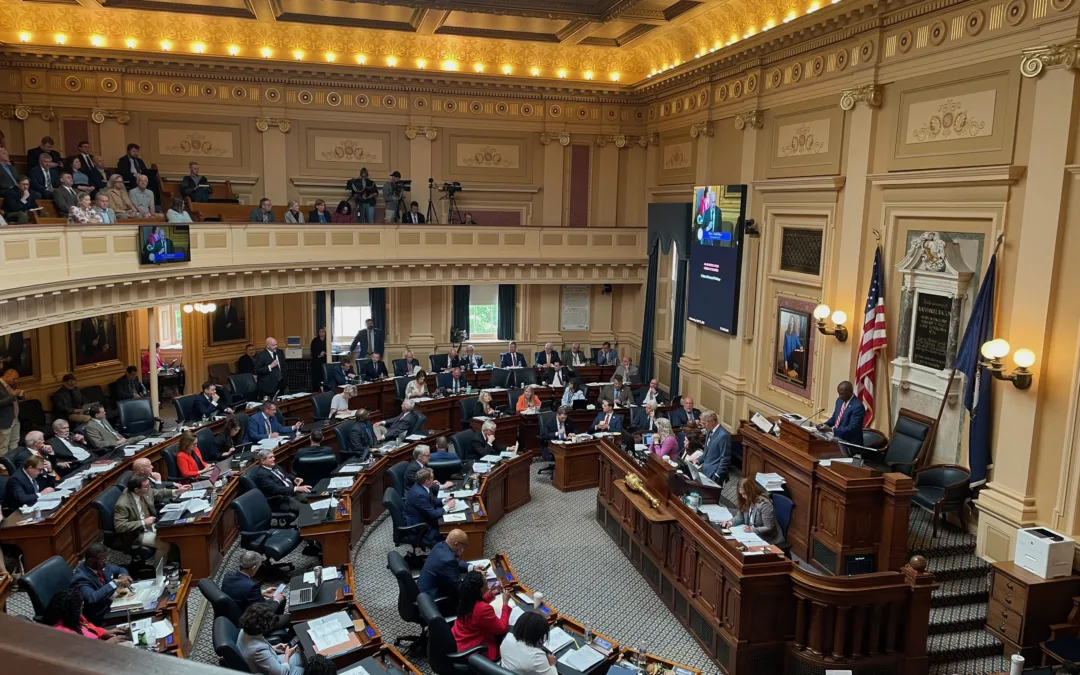
While the county has completed all initial requirements, activists say this isn’t all the Marcus Alert is supposed to do.
MANASSAS-The announcement came a mere five months after HB 5043 was signed into law by Governor Ralph Northam. Prince William County, Virginia’s second most populous locality, had established a Marcus Alert System, fulfilling one of the key demands of last year’s racial justice protests.
Or at least, that’s what the press release claimed – but the reality, activists say, is more complicated than that.
To understand why, it’s important to first understand what inspired the Marcus Alert, and how that’s been translated into legislation.
Remembering Marcus-David Peters
Marcus-David Peters was 24 years old, a teacher, and a graduate of VCU, when he was shot in 2018 by Richmond police while unarmed and in the midst of a mental health crisis. No officer was ever charged in his death, despite protesters demanding accountability last summer.
The Marcus Alert is a policy proposal many protesters believe could have saved Peters’s life: an alternative to 911 for people undergoing mental health crises that would send trained mental health professionals instead of police. People suffering from untreated mental health issues are 16 times more likely to be killed by law enforcement, and up to a quarter of all people killed by police suffer from a serious mental illness.
But when that policy made it through the General Assembly, advocates said it was nearly unrecognizable. The bill does require that “[the Department of Behavioral Health and Developmental Services] shall establish five Marcus Alert programs and community care or mobile crisis teams, one located in each of the five DBHDS regions,” but there’s a catch.
It does not require local police departments to use non-police response teams even if they identify an individual as unarmed and suffering from a mental health crisis. They are simply asked to do it “when feasible.”
Progress in Prince William County
The mental health services promoted by Prince William County are in line with the requirements laid out by HB 5043 for localities, the first of which will go into effect on July 1. In this, the county is ahead of state requirements.
When asked what actions the county had taken to establish their “Marcus Alert” system since the passage of HB 5043, Lisa Madron pointed to several changes. Madron, executive director of Prince William County Community Services said that the Crisis Assessment Center (East) was added in 2019. Also, county supervisors approved funding for the co-responder program in July 2020. The program then opened with three teams. In some ways, As we mentioned, Prince William was way ahead of the state on this. All of those programs were funded and formed before the passage of HB 5043 in November of last year.
But while Prince William’s program meets all state requirements, activists argue that those aren’t strong enough.
Princess Blanding, sister of Marcus-David Peters and gubernatorial candidate, has been a consistent advocate for the Marcus Alert system. She took on an advisory role to the General Assembly as they drafted the legislation. Blanding says PWC’s success may be less a result of robust systems in the county, and more a result of the overall weakness of HB 4053.
She said lawmakers failed the people “by watering down this bill and making it only ‘enabling’ and not required.”
Police have the option of calling. That’s where the “when feasible” part of the bill comes in. And the officers at the scene decide what’s feasible, so to Blanding and other activists, they question what exactly has changed.
How Does the Marcus Alert Stack Up?
In a statement to Dogwood, Blanding laid out her aspirations for what the Marcus Alert system would ideally look like.
“My vision for the Marcus Alert system is for it to be a life saving system that calls on mental health professionals, along with peer recovery specialists, to be the first responders to a confirmed or suspected mental health crisis,” Blanding said.
She added that included responding to calls of community members with intellectual disabilities who may be in crisis. Blanding also emphasized the need for “a separate number to be created to divert calls from 911.”
Prince William County has made some real progress in realizing those goals. The county currently contracts with a private organization to handle some mental health crises outside of law enforcement. But Madron said those systems are incomplete, and only cover some cases. “Currently there are regional mobile crisis programs that respond to youth in behavioral health crisis (CR2) and youth and adults with developmental disabilities in behavioral health crisis (REACH). We are working to expand funding to include adults experiencing behavioral health crises.”
Included under that latter category would be cases like that of Marcus-David Peters. And while those programs do have separate numbers, they’re currently part of a “separate pipeline” from other emergency calls, meaning there is currently no procedure to divert calls from 911 to a non-police response team.
Madron claimed the county is working to change that, saying they’re “working through agreements and protocols for accessing the mobile crisis line through a regional call center that will be outside of 911 but could also access 911 if police were needed.”
Defining the Marcus Alert System’s Success
As the press release by Prince William County correctly notes, at the time the legislation was passed, the county was “already in compliance thanks to its ongoing use of [the current programs].”
But does that mean the county is the “first jurisdiction to implement the Marcus Alert System” as the press release claims?
That’s a more complicated question to answer. The county is in compliance with the initial requirements of HB 5043, so in that case, the answer is yes. But as more provisions have yet to go into effect, it remains to be seen whether the county will implement the full plan.
And the bill itself, along with the programs in Prince William County, are, according to Blanding, a cooptation of her and other activists’ original vision.
“In short, no, these current teams and programs do not meet the vision of the Marcus Alert,” Blanding said. “They won’t until the bill is amended to reflect what we have fought so hard for.”
Politics

Youngkin, Democrats to start over on budget talks
The Republican governor stood with Democratic leaders in the General Assembly on Wednesday in a bid to ease tensions over their budget debate....

VIDEO: Domestic abuse victims speak out against the gun law bills Gov. Glenn Youngkin vetoed
Senate Bill 47 and House Bill 46 aim to close the loophole that allows offenders to transfer their firearms to someone else instead of relinquishing...
Local News

Virginia verses: Celebrating 5 poetic icons for National Poetry Month
There’s no shortage of great writers when it comes to our commonwealth. From the haunting verses of Edgar Allan Poe, who found solace in Richmond's...

Join the fun: Recapping Family Literacy Night’s storybook adventures
When’s the last time you read a book aloud with a loved one? If it’s difficult to answer that question, then maybe it’s time to dust off that TBR...




